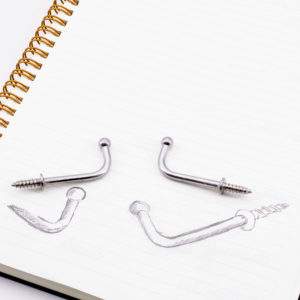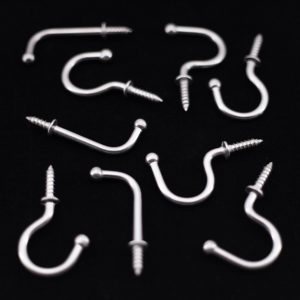Ce que signifie être innovant
Publié le 24 janvier 2021
Publié le 24 janvier 2021
Publié le 24 janvier 2021
The term innovation has become one of the most popular ‘buzz’ words in business today and companies throughout the world use it to describe their culture. What does it mean to really be innovative?Innovation can be defined as a company’s ability to turn an idea into a solution, but it should include that the solution must resolve a meaningful problem and provide a value to the customer. In today’s world, companies are rushing to introduce a new value to customers. But what separates those companies that just introduce products from those that provide innovative solutions? The difference is that innovative companies empathize with their customers in order to understand what the meaningful problem is. In addition, they foster a culture where people can think creatively and most importantly, commit the resources required to develop the right solution. This is how Sugatsune has developed a reputation over its 90-year history for creating unique, high-quality hardware solutions, that continue to be successful for decades. One example is the range of dampening technology called Lapcon which was first introduced during a time when many wondered why they needed a toilet seat to soft-close. Recognizing the stress created by slamming in the bathroom, Sugatsune engineers developed a rotary damper that eliminated this discomfort. Developed in the late 1980’s, this product continues to sell for other applications and based on its success, served as a base for many other products in the line-up. In fact, Lapcon technology eventually made its way into the kitchen again when many wondered why they needed soft-closing cabinets; their doors closed just fine. But early in the 1990’s Sugatsune’s Quiet Home concept demonstrated life without slamming doors. Today, soft-closing cabinets have become the cost of entry in modern kitchens as more hardware manufactures follow, introducing various types of soft-closing hardware. Why is it that companies like Sugatsune continue to innovate even after nine-decades? It is their ability to systematically and consistently find new ways to approach development of its products; whether it is a complexed door opening system or a simple magnetic catch. More importantly, it is the focus on understanding the challenges people face and the culture of supporting the development of practical solutions that will make their lives better.
In the 1950’s Japan was witnessing a post-war industrial revolution. Several new manufacturing techniques and materials were being discovered and new products were being introduced to change the way people experienced life. During this time, Michio Sugasawara was also looking for new opportunities to expand the company’s product offerings. His father who was the original founder of Sugatsune always taught Michio to embrace inspiration and creativity in order to make a positive impact on people’s lives. Understanding that inspiration can come from anywhere, Michio would study several industries and visit factories unrelated to the furniture industry.

Un soir, dans un restaurant, Michio observe plusieurs personnes utiliser un crochet à vêtements et constate que beaucoup d'entre elles abîment leurs vêtements en les récupérant. Il se souvient d'une visite chez un fabricant qui venait de découvrir une nouvelle technique permettant d'arrondir l'extrémité d'un fil. À l'époque, cette nouvelle méthode semblait prometteuse, mais personne n'avait imaginé comment l'utiliser. Mais pour Michio, c'est devenu une solution. En voyant tous ces gens se débattre pour enlever leur manteau du crochet, il a imaginé que l'extrémité arrondie qu'il avait vue plus tôt, au sommet du crochet, empêcherait les manteaux d'être endommagés, mais il ne s'est pas arrêté là.
Il se souvient d'une visite récente chez un constructeur automobile où il avait appris qu'un nouveau matériau était utilisé pour les tuyaux d'échappement, un alliage à base de fer contenant du chrome appelé acier inoxydable. À l'époque, l'acier inoxydable n'était pas un matériau très répandu au Japon en dehors des industries militaire et médicale. Mais comme ce matériau ne rouille pas, Michio s'est rendu compte qu'il pouvait fabriquer des produits qui résisteraient à l'épreuve du temps. Mieux encore, l'acier inoxydable pouvait être poli pour en améliorer l'esthétique et, comme il n'avait pas besoin d'être plaqué, il permettait de réduire l'impact sur l'environnement lors de la production.
Bien sûr, le développement de ce nouveau produit comportait de nombreux défis et risques, d'autant plus qu'il devait être fabriqué à partir d'un matériau relativement nouveau et avec de nouvelles techniques de fabrication. Mais comme le pensait son père, cela vaut la peine de s'engager si le produit que l'on crée est unique et améliorera la vie des gens. Cet engagement a contraint Michio à mettre au point une technique permettant d'enfiler, de fixer et de façonner un embout sphérique sur un fil de tige. Trois techniques de fabrication innovantes qui sont encore utilisées aujourd'hui.
C'est ainsi que Sugatsune est devenue la première entreprise à lancer un crochet à vêtements en acier inoxydable doté d'une pointe en forme de boule. Le succès de ce modèle a conduit à la création de plusieurs autres crochets dotés de cette caractéristique et, sept décennies plus tard, la pointe en forme de boule est devenue un design universellement reconnu sur les crochets.

This story is a testament to how innovation lives at the core of Sugatsune’s creative culture even for the simplest of products. The approach always starts with identifying the customers’ needs and then committing to develop solutions that create satisfaction and convenience for people. It is this approach that 90 years later, engineers inherently follow and one that has helped Sugatsune grow from a Japanese hardware distributor in 1930, to a global leading furniture, architectural and industrial hardware manufacture today.
Les fichiers CAO sont disponibles sur la page détaillée de chaque produit. Cliquez sur l'onglet "Fichiers CAD/BIM", situé au milieu de la page, pour télécharger les différents formats. Si les fichiers CAO ne sont pas disponibles pour un composant spécifique, veuillez contacter notre équipe d'assistance.
Numéro gratuit : (800) 562-5267 (États-Unis uniquement)